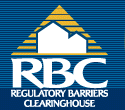 |
E-Permits Streamline Construction and Renovation
Eight Silicon Valley cities participated in the Smart Permit Program
begun in 1994 by the Joint Venture: Silicon Valley Network, a public-private,
nonprofit regional collaborative. This Web-based initiative has
a mission--to enable property owners, contractors, and businesses
to:
- Check the status of their permits online.
- Submit plans electronically.
- Apply and pay for permits online.
Each of the pilot cities (Fremont, Milpitas, Mountain View, Palo
Alto, San Carlos, San Jose, Santa Clara, and Sunnyvale) developed
its own Smart Permit system and contracted separately for the support
software.
The cities are in different stages of Smart Permit development.
Their Web sites illustrate the range of permit information and services
available online. For example:
- The City
of San Carlos offers Web-based information on permit status,
zoning, and property ownership. Inspectors in the field can use
wireless handheld and laptop computers to access information and
send back reports.
- City of Sunnyvale
developed an online Geographic Information System (SunGIS) that
has the capacity to handle permits, track complaints, schedule
inspections, and monitor hearings.
- City of Palo
Alto currently has permit status information available over
the Web, and is actively working toward piloting its new Internet-based
permitting service.
- City of Fremont,
City of Milpitas,
City of Mountain View,
and City of San Jose
also have Web sites offering online permit information and services.
Communities typically implement Web-based permitting in stages:
- Phase I focuses on the simplest, most frequently requested permits.
During Phase I, cities prepare for Internet permitting by opening
one-stop permit processing centers and automating permit systems.
- Phase II develops remote access, allowing customers to submit
applications for "simple" permits (not requiring submittal
of detailed plans), and issues permits over the Internet.
- Phase III offers online permitting for more complex projects
with required plan attachments. This phase allows applicants to
request inspections online and incorporates multi-agency online
review of permits.
According to Joint Venture's Web site, systems like Smart Permits
can save developers and contractors time and money. In turn, these
savings can help reduce housing costs to homeowners, homebuyers,
and renters. For more information, visit Joint Venture's Smart Permit
Web site:
http://www.jointventure.org/initiatives/smartpermit/pilot.html
The Department of Housing and Urban Development has recently published
a book describing electronic permitting systems in Silicon Valley
and other areas of the country. To learn more about these systems
please visit HUD USER's Web site at https://www.huduser.gov/publications/destech/electronic_permitting.html.
Austin's S.M.A.R.T. Housing is Breaking Barriers
S.M.A.R.T. stands for Austin's Safe, Mixed-Income, Accessible,
Reasonably-Priced, Transit-Oriented Houses. This initiative not
only encourages smart growth, it stimulates development of affordable
renter- and owner-occupied housing.
Austin has adopted several regulatory tools to heighten developers'
interest in building S.M.A.R.T. Houses:
- Affordable housing projects can qualify for waivers from local
development fees.
- Affordable housing proposals can receive expedited review for
development permits.
- Recent amendments to Austin's Land Development Code encourage
infill development.
Waiving Development Fees Makes Homes More Affordable
To further encourage affordable housing, the city exempts qualifying
units from some development fees. In 1998, for example, Austin agreed
to waive $1,500 per unit from impact fees developers would normally
pay for building permits. To receive the exemptions, builders had
to agree to build housing that is sold or rented to families with
incomes below 80 percent of the area median income (under $39,900
for a family of four). Builders can pass this $1,500 savings on
to the family either by reducing the price of the home or by leveraging
with other funds for downpayment assistance.
S.M.A.R.T. Houses Get Permits in Record Time
By expediting approval of a building permit for Riverside Meadows,
a new, affordable multifamily apartment building, Austin was able
to meet a deadline for critically important financing. As a certified
S.M.A.R.T. housing project, Riverside Meadows received building
permits in 29 days and qualified for $11.7 million in revenue bonds
to finance the project.
Encouraging Infill Enhances Affordability
New infill developments allow communities to use existing infrastructure
more efficiently and to provide affordable housing within the city.
Infill also reduces pollution and helps cut energy demand by shorting
commute times and improving access to existing public transportation.
To help fit new development into existing neighborhoods, Austin
passed Infill and Redevelopment Amendments to the city's overall
development code. Austin requires that any proposed infill development
be approved as part of an overall Neighborhood Plan.
Austin's Infill
and Redevelopment Amendments consist of the following eight
options:
- Cottage Lot Single family.
- Urban Home Single Family.
- Small Lot Amnesty.
- Secondary Apartment.
- Residential Infill.
- Mixed Use Building.
- Neighborhood Corner Store.
- Neighborhood Urban Center.
To learn more about the Smart Housing program, go to Austin's Neighborhood
Housing and Community Development Office Web site or contact
Stuart Hersh at
this department.
Fair Housing Puts Web Site to Good Use
"Welcome to the Community Choice Web Site," Rochester,
New York's online resource for fair housing information. The Web
site grew out of Rochester's county-wide Fair Housing Action Plan,
winner of HUD's 1999 Blue Ribbon Practices award. Rochester's fair
housing plan has become a model for the nation.
Established by the Rochester Public Interest Law Office, the Community
Choice Web site promotes plan strategies to overcome barriers to
fair housing and increase housing opportunities by engaging more
stakeholders in discussions about fair housing, and by educating
people about their responsibilities under fair housing laws and
the benefits of increasing housing choice.
Educating the Public
The Community Choice Web site educates public- and private-sector
audiences about fair housing laws in a number of effective ways.
Relevant sections include:
Online Locator for Fair Housing Resources
The Web site provides a comprehensive roster of community fair
housing resources:
For more information, visit the Community
Choice Web site
Or contact:
Public Interest Law Office of Rochester
80 St. Paul Street, Suite 701
Rochester New York, 14604
(716) 454-4060, bvankerk@wnylc.com
|
|


